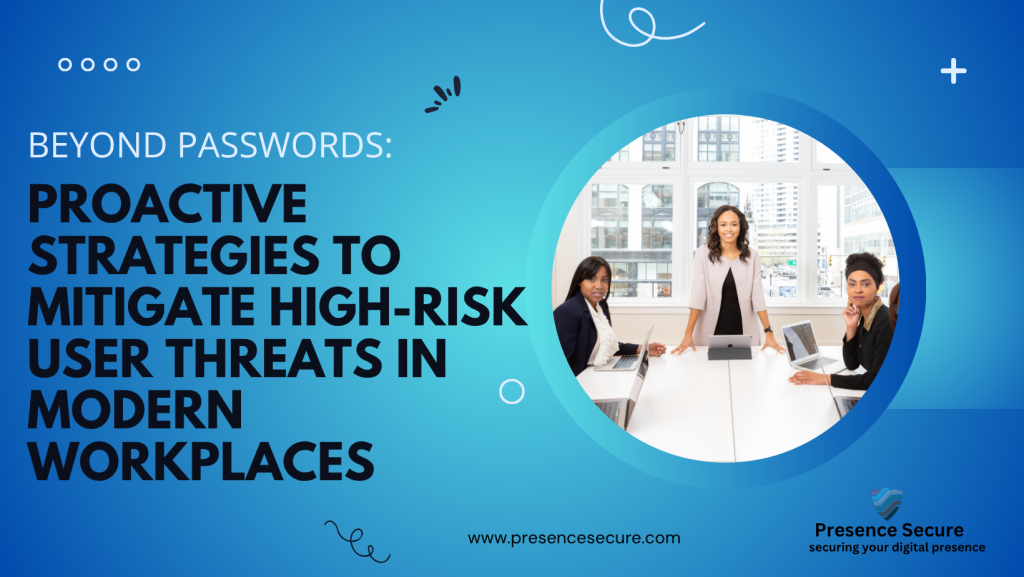In today’s digital-first workplace, passwords alone are no longer sufficient to protect sensitive systems and data especially from high-risk users. These users, whether due to their roles, behaviors, or access levels, represent potential entry points for cyberattacks. As threats evolve in complexity from phishing to deepfake impersonation organizations must adopt proactive, layered strategies that go beyond basic credentials to effectively safeguard their environments.
Why High-Risk Users Demand More Than Password Protection
High-risk users include executives, IT administrators, remote workers, and employees handling confidential information. These individuals are prime targets for cybercriminals using tactics like:
- Social engineering to exploit human error
- Credential stuffing and phishing attacks
- Voice and video deepfakes to authorize fraudulent actions
- Malware and ransomware delivered through trusted access channels
Traditional password protections can’t keep up with these sophisticated threats. It’s time to move beyond relying on what users know, and toward a more holistic defense strategy based on what users do, have, and are.
Proactive Strategies to Mitigate High-Risk User Threats
- Multi-Factor Authentication (MFA) and Beyond
Implement MFA for all users, but especially those in high-risk roles. Even better, consider passwordless authentication methods such as:
- Biometric logins (fingerprint, facial recognition)
- Hardware security keys (e.g., YubiKeys)
- App-based authentication with geolocation and time-of-access controls
- Role-Based Access Controls (RBAC)
Apply the principle of least privilege: users should only have access to the systems and data they need. Regularly audit access rights and promptly revoke permissions for unused roles or departing employees. - Continuous Behavior Monitoring
Use User and Entity Behavior Analytics (UEBA) tools to detect unusual activities, such as:
- Login attempts at odd hours or from unfamiliar locations
- Rapid file downloads or data transfers
- Attempts to access restricted applications
Behavioral analytics helps identify compromised accounts early — even when credentials appear valid.
- Zero Trust Architecture
Adopt a Zero Trust model, which assumes that every user, device, or system is a potential threat until verified. This model includes:
- Micro-segmentation of network access
- Continuous verification of user identity and device health
- No blanket trust for users, even those inside the network
- Targeted Security Training and Simulations
Not all users need the same security training. Provide role-specific simulations and threat scenarios, such as:
- CEO fraud awareness for executives
- Phishing drills for finance teams
- Social engineering simulations for customer-facing roles
Customized training helps high-risk users recognize and avoid threats tailored to them.
- Real-Time Alerts and Incident Response Plans
Ensure you have systems that generate instant alerts for risky actions and clear escalation paths when threats are detected. Every minute counts particularly when high-risk users are involved. - Regular Cyber Hygiene Assessments
Conduct assessments to measure compliance with security policies. Include checks for:
- Use of unauthorized apps (shadow IT)
- Weak or reused passwords
- Delays in applying software or system updates
Conclusion
High-risk users are a reality in every modern organization, and traditional defenses like passwords are no longer enough. By combining advanced authentication, smart access control, behavior analytics, and targeted education, businesses can proactively reduce the threat posed by high-risk users. In the evolving landscape of cyber threats, your best defense is to build a culture and a system where every access request is questioned, every anomaly is flagged, and every user is empowered to play a role in protecting the organization.

